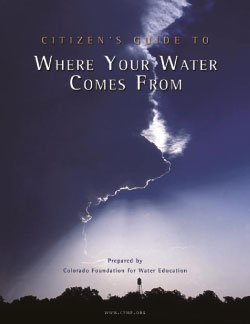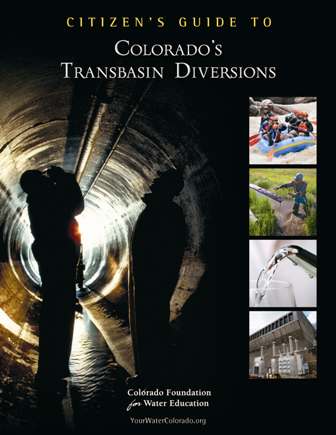Water Planning & Distribution
Water makes a long journey from its source to your faucet. Its seemingly effortless appearance is the result of great effort, expense, and management, often through a network of diversions, storage, infrastructure, and treatment facilities – but all this comes at a cost.
For most people, the question, “Where does your water come from?” has a simple answer: “From the tap.” It seems hard to believe that the water for your morning shower may have traveled more than 200 miles, from a melting snowbank to a high mountain reservoir, through tunnels, treatment plants, and pipes. Or it may have been pumped from 2,500 feet below the earth’s surface, tapping ancient water molecules that made their way into these aquifers during the Stone Age.
Water comes to us initially from the atmosphere as rain or snow. Colorado’s dry climate means we get more of the latter than the former. Two natural sources collect this moisture: rivers (surface water) and underground aquifers (groundwater). Rain and snow recharge both rivers and shallow groundwater aquifers with an annual supply of water. Deeper aquifers are also recharged, but through different flow paths and at much slower rates.
Without human intervention, a large percentage of water would remain underground or flow downstream in rivers toward the ocean. To meet human needs, a great deal of infrastructure has been constructed to divert, collect, convey, and treat water, making it available for many different users.
Click the Fluent Water Facts below to learn more about where your water comes from.
CFWE Water Origin Resources
The Citizen's Guide to Where your Water Comes From explains how weather patterns and aquifers supply the water we use. Learn more about the intricate distribution systems Coloradans have developed to deliver water to our farms and cities. Flip through the online version or purchase a copy.
CFWE's newest Citizen's Guide highlights the history, costs and benefits of these controversial water projects, from both an historic and current point of view. Flip through the online version or puchase a copy.


